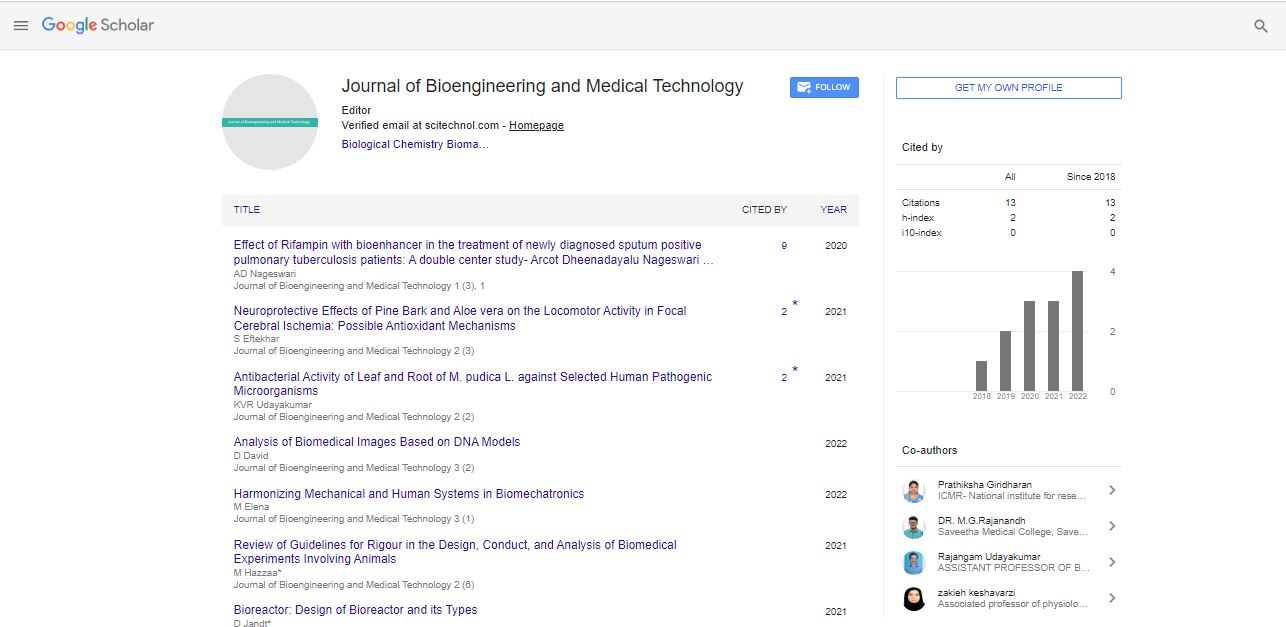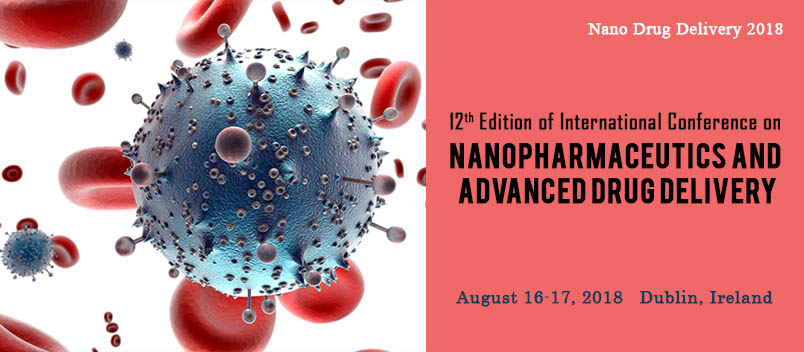Perspective, J Bioeng Med Technol Vol: 4 Issue: 2
Biofabrication Techniques for Organ and Tissue Regeneration
Tajinder Singh*
1Bioengineering and Medical Devices Department, National University of Singapore, Buona Vista, Singapore
*Corresponding Author: Tajinder Singh,
Bioengineering and Medical Devices
Department, National University of Singapore, Buona Vista, Singapore
E-mail: tajenda2454@gmail.com
Received date: 22 May, 2023, Manuscript No. JBMT-23-107424;
Editor assigned date: 24 May, 2023, Pre QC. JBMT-23-107424 (PQ);
Reviewed date: 15 June, 2023, QC No. JBMT-23-107424;
Revised date: 22 June, 2023, Manuscript No. JBMT-23-107424 (R);
Published date: 29 June, 2023, DOI: 10.35248/jbmt.1000076
Citation: Singh T (2023) Bioinspired Approaches for Medical Technology Design. J Bioeng Med Technol 4:2.
Description
Biofabrication has emerged as a revolutionary approach in regenerative medicine, allowing the creation of complex threedimensional structures, such as organs and tissues, using biological materials, exploring the latest advancements in biofabrication techniques, including 3D bioprinting, decellularization, and tissue engineering, focusing on their potential applications in organ and tissue regeneration. The integration of these cutting-edge techniques has the potential to revolutionize medical treatments, providing new hope for patients suffering from organ failure and tissue damage.
The scarcity of organ donors and the limitations of traditional tissue engineering methods have spurred the development of biofabrication techniques, in aiming to present an overview of the current state of biofabrication technologies and their potential in organ and tissue regeneration.
3D bioprinting involves the layer-by-layer deposition of bioinks containing cells, growth factors, and biomaterials to develop functional living structures. This section explores various bioprinting technologies, such as inkjet, extrusion-based, and laser-assisted bioprinting, discussing their advantages and challenges.
Decellularization is a process where the cellular components of an organ or tissue are removed, leaving behind the extra cellular matrix (ECM). This ECM scaffold can then be repopulated with patientspecific cells, enabling organ transplantation without the risk of rejection.
Tissue engineering involves the combination of cells, scaffolds, and growth factors to enhance functional tissues. This section explores the latest advancements in tissue engineering techniques, including the development of novel biomaterials and the incorporation of biophysical cues to enhance cellular behavior.
Kidney transplantation is limited by the shortage of donors. Biofabrication techniques offer the potential to produce personalized kidneys using a patient's own cells, reducing the risk of rejection and increasing the success rate of transplantation.
Chronic liver diseases and organ failure are major health concerns worldwide, examining the use of biofabrication techniques to engineer functional liver tissue for transplantation, drug testing, and disease modeling.
Heart diseases remain a leading cause of mortality globally, exploring how biofabrication can help regenerate damaged heart tissues, including the fabrication of cardiac patches and bioengineered heart valves.
Chronic wounds and burns can lead to severe complications. This section discusses how biofabrication techniques can be employed to produce skin substitutes that promote wound healing and improve the quality of life for patients.
Bone defects resulting from trauma or disease require innovative solutions, examining the use of biofabrication to engineer bone tissues and constructs, highlighting the potential for patient-specific implants.
Osteoarthritis is a prevalent joint disorder, exploring biofabrication techniques for cartilage regeneration, including the use of cell-laden hydrogels and 3D-printed scaffolds.
Despite significant progress, several challenges remain in the field of biofabrication for organ and tissue regeneration. This section discusses the need for standardized protocols, the importance of vascularization, and ethical considerations surrounding biofabrication technologies. Furthermore, it outlines potential future developments and the integration of artificial intelligence and machine learning in biofabrication.
Conclusion
Biofabrication techniques have tremendous potential for organ and tissue regeneration, potentially revolutionizing the field of regenerative medicine. As these technologies continue to advance, they may address the important healthcare challenges associated with organ failure and tissue damage, providing hope for a healthier and more sustainable future.
 Spanish
Spanish  Chinese
Chinese  Russian
Russian  German
German  French
French  Japanese
Japanese  Portuguese
Portuguese  Hindi
Hindi 
